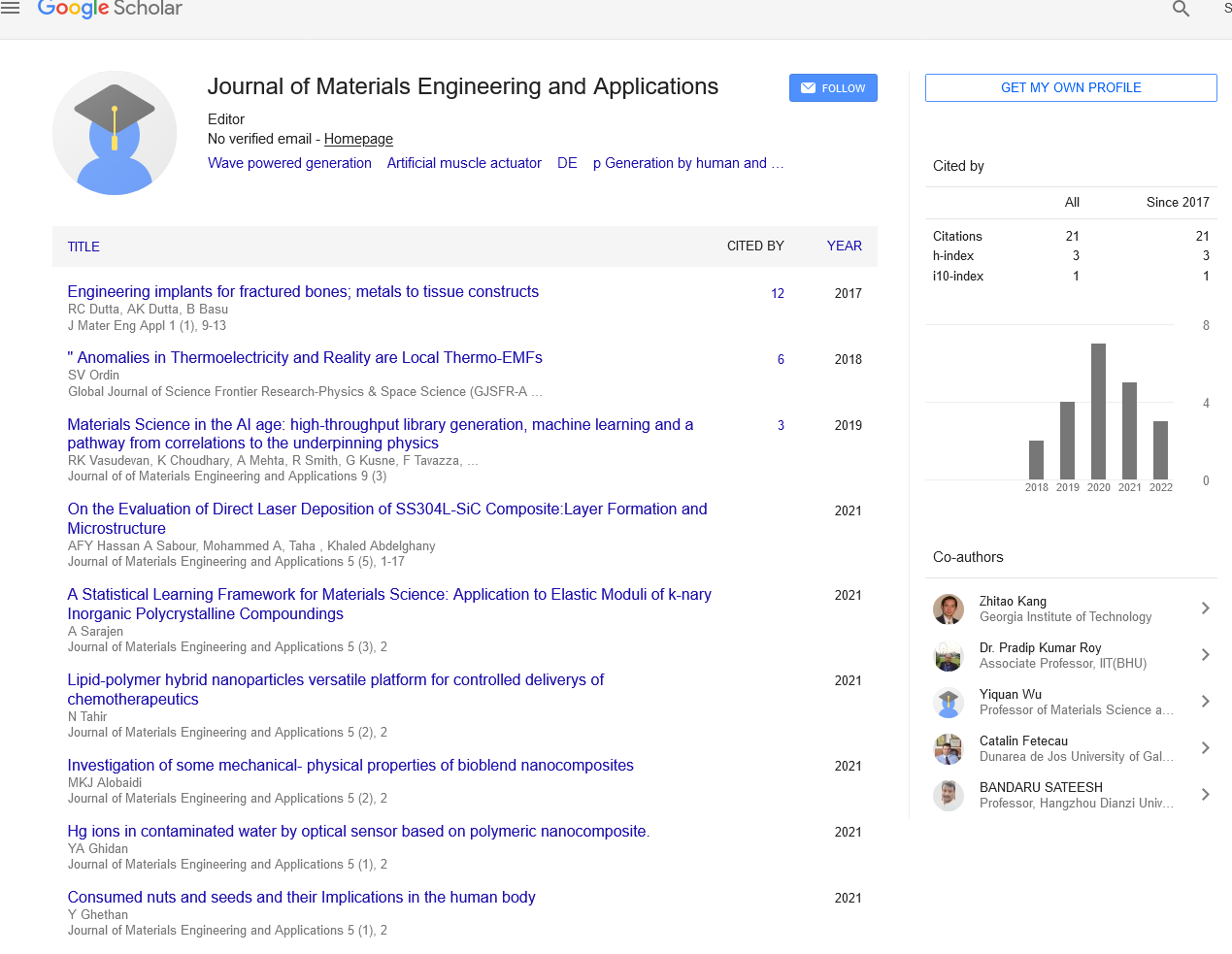
Sign up for email alert when new content gets added: Sign up
Crystallographic Analysis of Thermoelasticity and Superelasticity in Shape Memory Alloys
4th International Webinar on Materials Chemistry
October 21, 2021 | Webinar
Osman Adiguzel
Firat University, Department of Physics, Elazig, Turkey
Keynote: J Mater Eng Appl
Abstract :
Shape memory effect is a temperature dependent phenomenon exhibited by certain alloy systems called shape memory alloys which take place in the class of advanced smart and functional materials, by exhibiting thermoelasticity and superelasticity. Thermoelasticity is initiated by thermomechanical treatments on cooling and deformation and performed thermally on heating and cooling. Superelasticity is performed mechanically by stressing in parent phase field. In the shape memory effect, the material is deformed plastically in low temperature condition; strain energy is stored in material and released on heating by recovering the original shape. Also, the materials cycle between original and deformed shapes on heating and cooling in the bulk level. Thermoelasticity is governed by thermal and mechanical reactions, thermal and stress induced martensitic transformations on cooling and stressing, and performed thermally on heating and cooling after first cooling and stressing processes. Superelasticity is governed by stress induced transformation by stressing and releasing materials at a constant temperature in parent phase region. Thermal induced martensite occurs on cooling with the cooperative movements of atoms <110 > -type directions on the {110}- type plane of austenite matrix, along with lattice twinning and ordered parent phase structures turn into twinned martensite structures. The twinned structures turn into detwinned martensitic structures with deformation by means of stress induced transformation. Lattice Twinning occurs in two opposite directions, <110 > -type directions on the {110}-type plane of austenite matrix in self-accommodating manner and consists of lattice twins. The twinning occurs with internal stresses, while detwinning occurs with the external stresses. Twinning and detwinning processes can be considered as elementary processes activated during the transformations. Temperature has great importance in the thermomechanical behavior of shape memory alloys. Shape memory effect is performed in a temperature interval after first cooling and stressing processes, whereas superelasticity is performed mechanically in a constant temperature in parent phase region, just over the austenite finish temperature. Stressstrain profile is not linear in superelasticity, stressing path and releasing path are different, and hysteresis loop refers to the energy dissipation. Deformation at different temperature exhibits different behavior beyond shape memory effect and superelasticity. Copper based alloys exhibit this property in metastable beta-phase region, which has bcc based structures at the parent phase field. Lattice invariant shear and twinning is not uniform in these alloys and cause the formation of complex layered structures, depending on the stacking sequences on the close-packed planes of the ordered lattice. In the present contribution; x-ray and electron diffraction studies were carried out on two solution treated copper based CuZnAl and CuAlMn alloys. Electron and x-ray diffraction exhibit super lattice reflections. Specimens of these alloys were aged at room temperature, at which both alloys are in martensitic state. A series of x-ray diffractions were taken at different stages of aging in a long-term interval. X-Ray diffraction profiles taken from the aged specimens in martensitic conditions reveal that crystal structures of alloys chance in diffusive manner, and this result refers to the stabilization.
Biography :
Osman Adiguzel graduated from Department of Physics, Ankara University, Turkey in 1974 and received PhD- degree from Dicle University, Diyarbakir-Turkey. He has studied at Surrey University, Guildford, UK, as a post-doctoral research scientist in 1986-1987, and studied on shape memory alloys. He worked as research assistant, 1975-80, at Dicle University and shifted to Firat University, Elazig, Turkey in 1980. He became professor in 1996, and he has been retired due to the age limit of 67, following academic life of 45 years. He published over 80 papers in international and national journals; He joined over 100 conferences and symposia in international and national level as participant, invited speaker or keynote speaker with contributions of oral or poster. He served the program chair or conference chair/ co-chair in some of these activities. In particular, he joined in last seven years (2014 - 2020) over 80 conferences as Keynote Speaker and Conference Co-Chair organized by different companies. He supervised 5 PhD- theses and 3 MSc- theses. Dr. Osman Adiguzel served his directorate of Graduate School of Natural and Applied Sciences, Firat University, in 1999-2004. He received a certificate awarded to him and his experimental group in recognition of significant contribution of 2 patterns to the Powder Diffraction File – Release 2000. The ICDD (International Centre for Diffraction Data) also appreciates cooperation of his group and interest in Powder Diffraction File.




